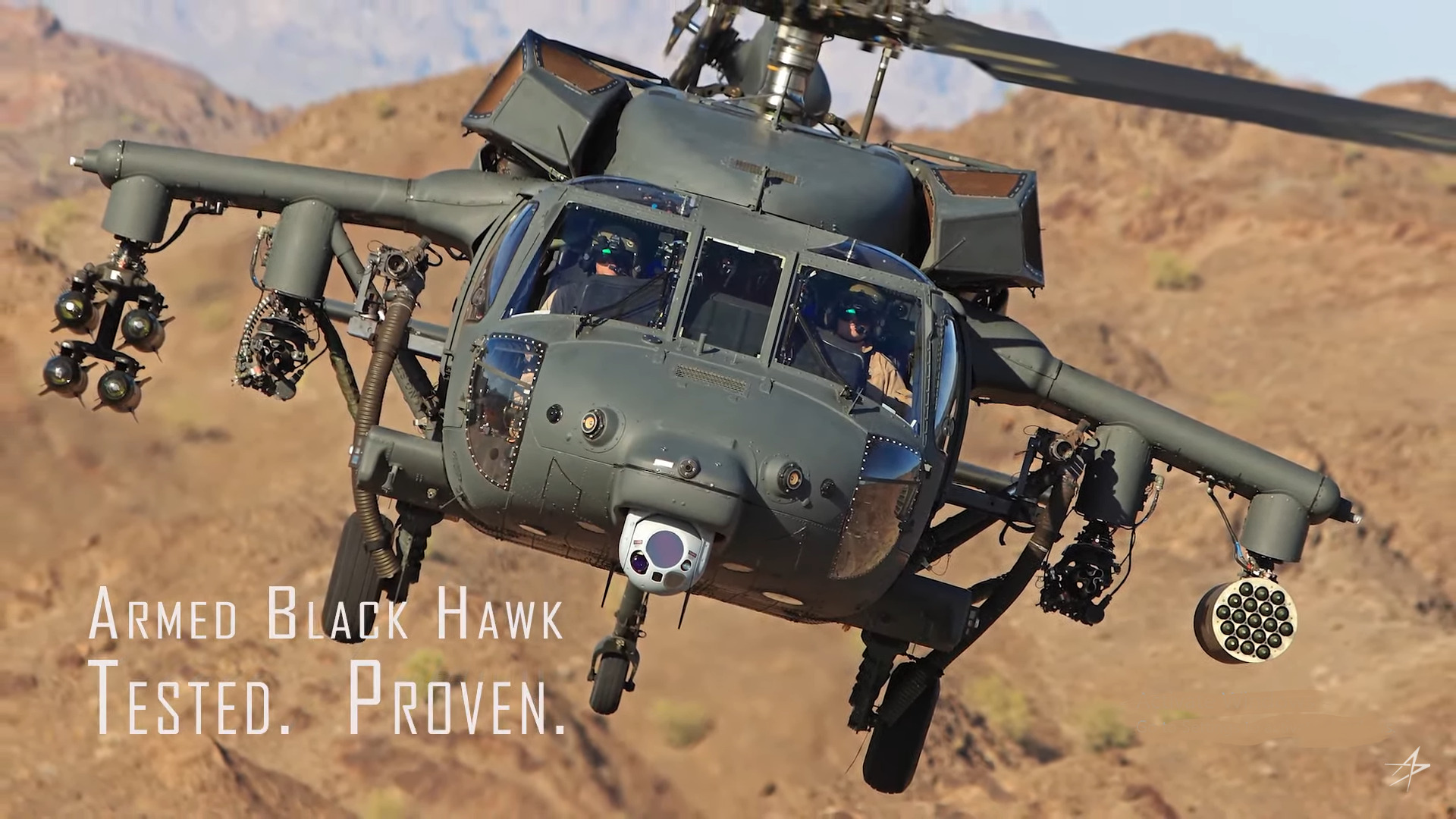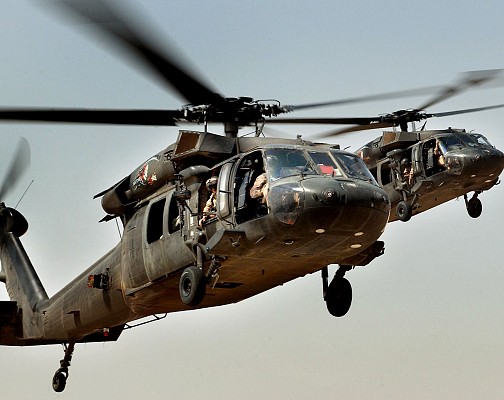Why the UH 60 Is Essential for Modern Armed Forces and Special Operations
Why the UH 60 Is Essential for Modern Armed Forces and Special Operations
Blog Article
Exploring the History and Development of the UH 60 Helicopter

Origins of the UH-60
The origins of the UH-60 helicopter can be mapped back to the late 1960s, a period marked by the requirement for a flexible energy airplane that can adapt to the developing demands of modern-day war. The united state Military identified the need for a replacement for the older UH-1 Iroquois, which was ending up being significantly poor for the complexities of contemporary fight scenarios. In 1967, the Army initiated the Utility Tactical Transport Aircraft System (UTTAS) program, which sought to develop a multi-role helicopter efficient in various objectives, including troop transport, medical discharge, and logistical assistance.
The design competitors drew in a number of aerospace producers, however it was Sikorsky Airplane Corporation that eventually protected the contract in 1972. The UH-60 Black Hawk was introduced, showcasing cutting-edge style aspects and advanced modern technology that set it besides its predecessors. Its initial trip occurred in 1974, and the airplane was formally embraced by the Military in 1979. The UH-60 promptly got recognition for its robust efficiency, integrity, and versatility, leading the way for its substantial usage in armed forces operations and strengthening its condition as a keystone of united state Army aviation.
Key Style Attributes
Ingenious layout features of the UH-60 Black Hawk dramatically add to its operational efficiency. Among one of the most noteworthy facets is its twin-engine setup, which boosts reliability and provides a higher power-to-weight ratio, making it possible for the helicopter to carry out under numerous conditions. The airplane's four-blade main rotor system offers boosted lift and maneuverability, crucial for tactical missions.

In addition, the cockpit is designed for optimum visibility and ergonomics, including advanced avionics that streamline pilot procedures. The modular style of the UH-60 enables easy upkeep and flexibility, making it suitable for numerous mission accounts, from army transport to medevac procedures. These essential layout attributes make sure that the UH-60 Black Hawk continues to be a functional and trusted property in military air travel, with the ability of satisfying the demands of contemporary war.
Technological Improvements
Recent technical advancements in the UH-60 Black Hawk have dramatically enhanced its functional capabilities and adaptability. The assimilation of advanced avionics, such as digital trip control systems and enhanced situational understanding display screens, permits pilots to operate with boosted accuracy and performance. These systems help with enhanced navigation, interaction, and information sharing, enabling the helicopter to function efficiently in diverse environments.
Additionally, the introduction of composite materials has reduced the overall weight of the aircraft while maintaining structural stability. This reduction enhances gas efficiency and expands operational array. The unification of advanced blades innovation, including the usage of four-blade, totally verbalized rotor systems, has improved lift efficiency and ability to move, permitting far better handling in numerous trip conditions.

Furthermore, advancements in propulsion systems, such as the T700-GE-701D engines, have increased power result and reliability - uh 60. These engines contribute to exceptional performance in high-altitude and hot-weather problems
Last but not least, the combination of self-defense systems and improved sensing unit plans boosts the Black Hawk's survivability and goal performance. Collectively, these technological renovations make certain that the UH-60 Black Hawk remains an essential possession in contemporary aviation, efficient in adjusting to the progressing demands of army and humanitarian goals.
Duty in Military Workflow
As the foundation of U.S. Military aviation, the UH-60 helicopter plays a crucial role in various army operations, offering as a flexible system for fight support, transport, and medevac objectives - uh 60. Its web link layout integrates the capability to run in diverse settings, making it essential for army movement and logistical assistance in both unconventional and standard war

In medical evacuation circumstances, the UH-60 has actually proven vital, substantially minimizing the time to transport wounded soldiers from the battleground to clinical centers. Its advanced avionics and evening vision capacities better make certain objective success under challenging problems. Generally, the UH-60 helicopter stays an important asset, constantly adapting to satisfy the progressing demands of army operations and boosting the efficiency of united state forces worldwide.
Future of the UH-60
Looking ahead, the future of the UH-60 helicopter involves considerable improvements in technology and abilities developed to enhance its functional efficiency. As military operations advance, the UH-60 is anticipated to include innovative technologies, consisting of enhanced avionics, improved tools systems, and progressed interaction devices. These enhancements will enable better situational understanding and mission versatility, making sure that the UH-60 continues to be a vital property on the battleground.
One remarkable development is the assimilation of fly-by-wire systems, which will boost flight control accuracy and minimize pilot work. Efforts to update the airframe and engines intend to raise speed, range, and haul capacity, thereby broadening the helicopter's functional range.
The future also holds guarantee for boosted interoperability with unmanned airborne systems (UAS), enabling collaborated goals that leverage both manned and unmanned abilities. Furthermore, the unification of expert system and artificial intelligence might optimize trip characteristics and upkeep procedures, leading to minimized operational expenses.
Verdict
The UH-60 Black Hawk helicopter represents a substantial success in military air travel, evolving from the U.S. Military's preliminary needs for a versatile utility airplane. Its cutting-edge style features and constant technical improvements have actually ensured its importance in different Learn More Here military procedures over the decades. As the demands of modern-day warfare change, the future of the UH-60 will likely involve more enhancements and adjustments, reinforcing its status as an important property for militaries worldwide.
The UH-60 Black Hawk helicopter stands for a significant landmark in military air travel, emerging from Look At This the United state Military's quest for a more trusted and functional utility airplane in the late 20th century.The origins of the UH-60 helicopter can be mapped back to the late 1960s, a period noted by the requirement for a functional utility aircraft that can adapt to the advancing demands of contemporary warfare. Generally, the UH-60 helicopter continues to be a vital asset, constantly adjusting to fulfill the advancing demands of army operations and improving the performance of United state pressures worldwide.
Looking ahead, the future of the UH-60 helicopter entails substantial improvements in modern technology and capacities made to enhance its operational effectiveness.The UH-60 Black Hawk helicopter stands for a substantial accomplishment in armed forces aviation, progressing from the U.S. Military's preliminary needs for a flexible energy airplane.
Report this page